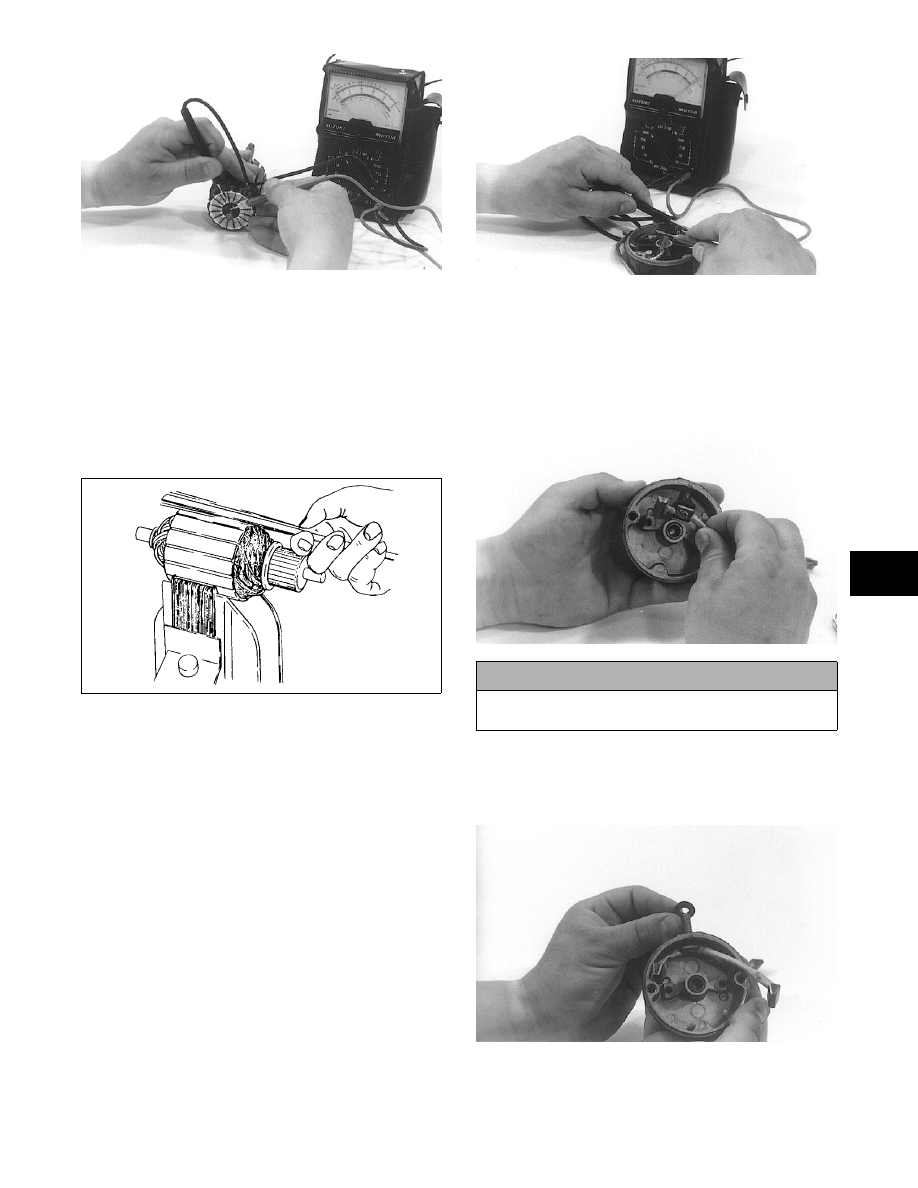Snowmobile Arctic Cat (2008 year). Manual - part 86

5
5-25
AI034
10. Inspect the armature for shorting. Use a “growler”
and the following procedure:
A. Place the armature in the “growler.”
B. While holding a metal strip over the armature,
rotate the armature an entire revolution. If the
metal strip vibrates at any point on the arma-
ture, the armature is shorted and must be
replaced.
0725-653
11. Inspect the ground brushes to make sure they are
properly grounded. Use the multitester and the fol-
lowing procedure:
A. Set the selector on the OHMS position; then
touch the leads and zero the meter.
B. Touch the black tester lead to a ground brush.
C. Touch the red tester lead to the commutator cap.
The meter needle should move to the right. If
the needle does not move to the right, check
that the ground connection is tight and clean.
Recheck for proper ground. If there still isn't
any meter needle movement, replace the
brushes as a set along with new brush springs.
AI035
ASSEMBLING
1. Install the stud with the positive brush set attached
in the commutator cap. Make sure the insulator is
in position over the stud and the longest brush lead
is positioned to the right of the stud hole.
AI038
2. In order from disassembling, place the washers on
the stud. Apply a small amount of red Loctite #271
to the stud threads and secure with the nut. Tighten
to 60 in.-lb.
AI039
3. Place the brush holder into position in the commu-
tator cap.
! CAUTION
Check the stud to make sure insulator is between
stud and cap on backside.